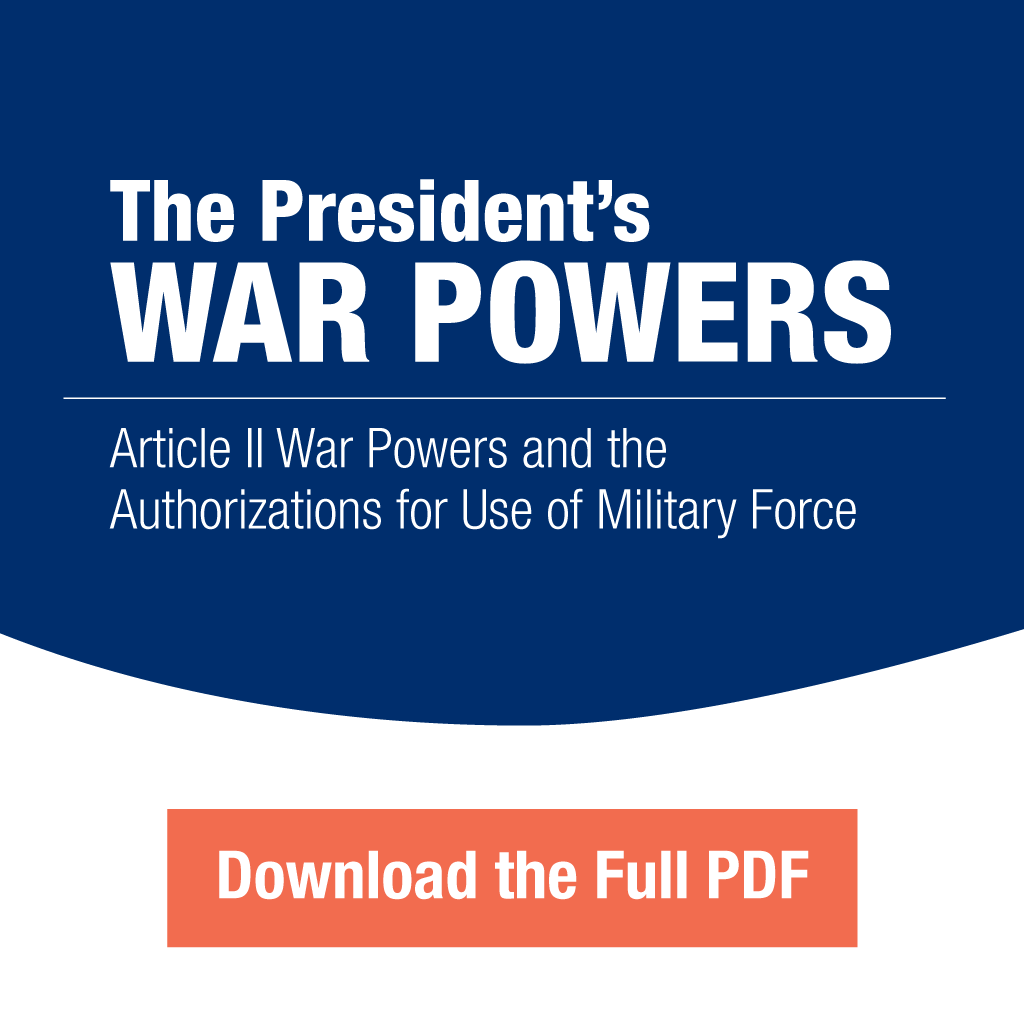The Prize Cases, discussed above in Section 2, was the last time the Supreme Court weighed in on the president’s defensive war power as Commander in Chief. While there remains significant disagreement between the executive and legislative branches over the scope of this power, there is substantial agreement that the president can use military force without prior congressional authorization in several circumstances:
To defend against a sudden actual or imminent attack.
As noted above, in the Prize Cases the Supreme Court confirmed the president’s power to use force without congressional authorization to repel sudden attacks. There is general agreement that this power permits the president to repel both actual and imminent attacks “when there is no time, as a practical matter, for Congress to decide.” This right is also consistent with the right of states under Article 51 of the UN Charter to use force in self-defense against an actual or imminent armed attack.
To protect and rescue Americans abroad.
As noted in a bipartisan expert report, “Congress has historically acquiesced in the President’s use of limited force abroad, without specific prior congressional authorization, to protect and rescue Americans when local authorities cannot or will not protect them.”
A 1980 Department of Justice Office of Legal Counsel (OLC) opinion concerning the legality of the proposed rescue operation of 50 U.S. citizens being held hostage in Iran noted that the president has used military force without congressional authorization to protect and rescue Americans abroad in numerous instances, including evacuations from Phnom Penh, Saigon (both 1975), and Lebanon (1976).
The memo also pointed to the 1868 Supreme Court case of Durand v. Hollins, which held that the president’s Commander in Chief power permits the use of the military in response to an attack on American people or property abroad. It concluded that the Commander in Chief power provided the president with the authority to “rescue [U.S.] hostages [held in Iran] or to retaliate against Iran in the event that the hostages were harmed.”
Subsequent OLC opinions have also cited the protection of U.S. citizens and property as a basis for the president’s use of military force under Article II, including in Somalia (1992) and Haiti (2004).
In addition to the president’s inherent Article II power to protect and rescue Americans abroad, Congress has also legislated to require the president to “use such means, not amounting to acts of war and not otherwise prohibited by law, as he may think necessary and proper to obtain or effectuate the release” of U.S. hostages held abroad by a foreign government.
To safely remove troops.
A bipartisan expert report states that, even if Congress, through its appropriations power, terminates the use of force abroad, this cannot impact the president’s authority to safely remove U.S. troops. The scholars reason that such an attempt by Congress would “intrude on the Commander in Chief’s tactical command of the day-to-day operation of the armed forces.”
To conduct peacetime deployments.
As Commander in Chief, the president is permitted to deploy U.S. armed forces for purely peaceful purposes. It should be noted that Congress has expressly authorized many such peaceful deployments, including for humanitarian relief, foreign disaster assistance (additional source), and the detailing of troops in a “non-combatant capacity” to the United Nations.
However, scholars have noted that even where Congress has not specifically authorized such activities, “Congress has acquiesced in such uses of the armed forces by the President by adopting collateral facilitating legislation, appropriating funds for such uses after the fact, and not objecting to them when it had the opportunity to do so.”

